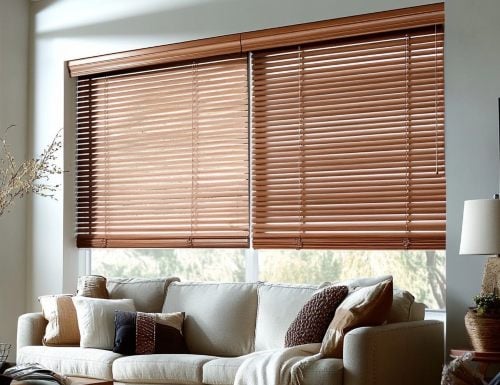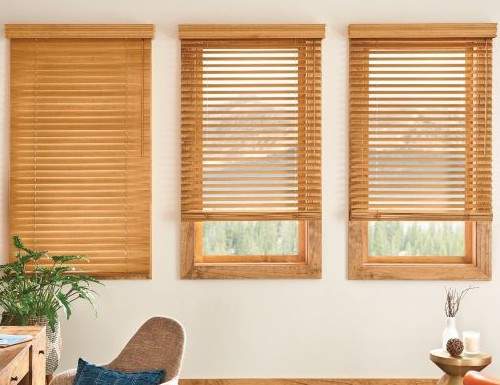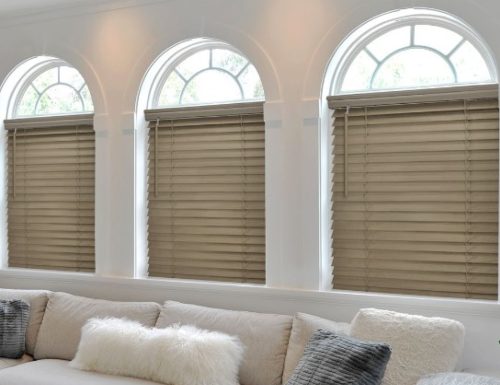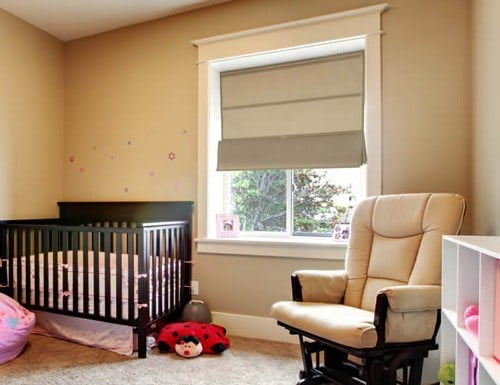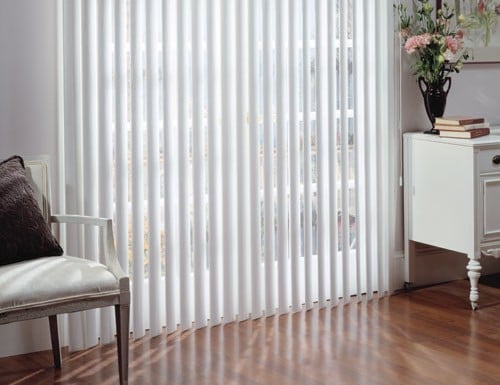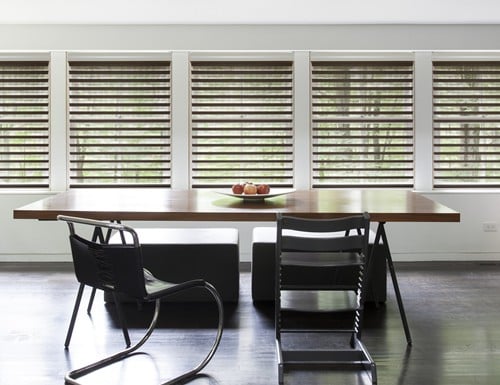Lexi Westingate | Blinds Chalet Design Team
Updated: Sep 17 2024

Choosing between real wood and faux wood blinds can be challenging. Each option has its own unique advantages in terms of appearance, durability, and cost. This guide will help you compare the two and determine which option best suits your home’s needs.
1. Aesthetics: Authentic Wood vs. Imitation
Real Wood Blinds
- Timeless Appeal: Real wood blinds are crafted from natural hardwood, providing a luxurious look that’s hard to replicate. Each slat has its own grain pattern, adding character and elegance to your windows.
- Custom Finishes: Available in a wide range of stains and colors, real wood blinds can be customized to match any décor, whether it's a light oak finish or a rich walnut tone.
- Close Imitation: Faux wood blinds are designed to mimic the appearance of real wood and are available in a variety of wood-like finishes. While they look convincing, they don’t quite match the warmth and authenticity of real wood.
- Uniform Look: Faux wood blinds have a consistent appearance across all slats, making them a good choice if you prefer a uniform look for multiple windows.
2. Durability and Moisture Resistance
Real Wood Blinds
- Vulnerable to Moisture: Real wood blinds are best suited for dry areas like living rooms or bedrooms, as they can warp or crack in humid environments.
- Long-Term Durability: With proper care, real wood blinds can last for many years. Regular dusting and occasional polishing will help maintain their finish.
- Moisture-Resistant: Faux wood blinds are highly resistant to moisture, making them ideal for kitchens, bathrooms, or any room with high humidity. They won’t warp or crack like real wood.
- • Low Maintenance: Easy to clean, faux wood blinds only need a quick wipe-down to stay looking fresh.
resistance to warping. For drier rooms, real wood blinds provide unmatched elegance and longevity.
3. Price Considerations
Real Wood Blinds
- Premium Cost: Real wood blinds are typically more expensive due to the use of natural materials and craftsmanship. They are ideal for those seeking high-end, long-lasting window treatments.
- Affordable Option: Faux wood blinds are more budget-friendly, offering a great alternative for homeowners who want the look of wood without the higher price tag.
4. Insulation and Energy Efficiency
Real Wood Blinds
- Superior Insulation: Wood is a natural insulator, helping to regulate the temperature in your home and potentially lowering energy costs. Real wood blinds keep rooms cooler in the summer and warmer in the winter.
- Good Insulation: While faux wood blinds offer some insulation, they don’t match the natural insulating properties of real wood. However, they still help block sunlight and manage indoor temperatures.
5. Environmental Impact
Real Wood Blinds
- Sustainable Materials: When sourced responsibly, real wood blinds are an environmentally- friendly choice. Many manufacturers use wood from sustainably managed forests, making real wood a renewable resource.
- Non-Biodegradable: Made from synthetic materials, faux wood blinds are durable but not biodegradable. Their production process can also have a larger environmental impact.
sourced materials are the eco-friendlier option. Faux wood blinds may not have the same environmental benefits.
Conclusion: Real Wood or Faux Wood?
Choosing between real wood and faux wood blinds comes down to your personal preferences, budget, and the room's environment. If you want natural beauty, superior insulation, and a premium finish, real wood blinds are the ideal choice for spaces with low moisture. On the other hand, if you need durable, moisture-resistant blinds for high-humidity areas or are looking for a more budget-conscious option, faux wood blinds are a smart solution. Both options offer great style and functionality, ensuring that whichever you choose, your windows will look beautiful and perform well.





